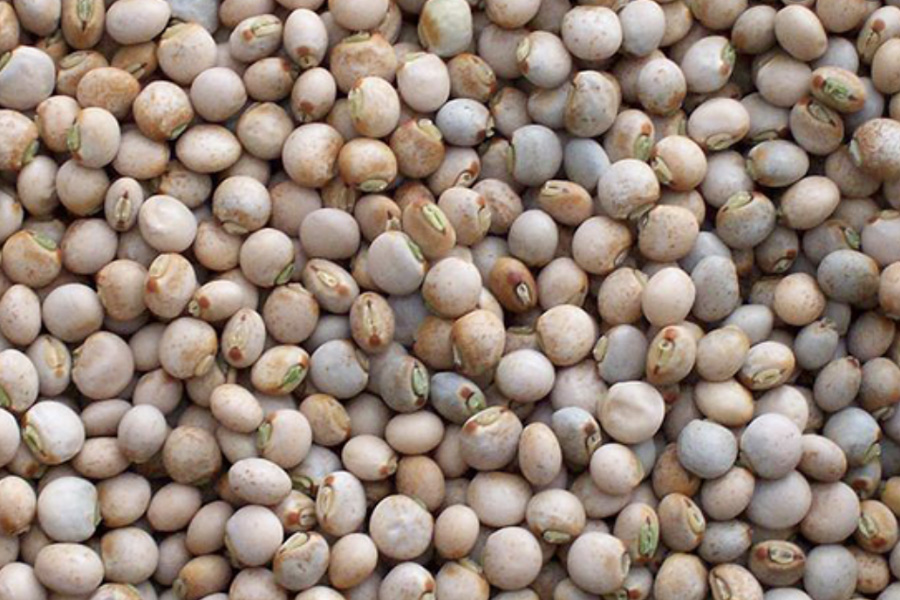
Rundown of Indian Markets- New MSP announced
The government announced the MSPs for kharif crops last week. The MSP for pigeon peas, the main kharif season pulse crop, increased Rs. 300 over last year’s MSP. For the new season, the MSP was set at Rs. 6,300; it was Rs. 6,000 last year. Due to the increase in MSP, selling decreased and buying increased. Imports will likely be limited.
Further, this year farmers will be more inclined to sow soybeans and traders are anticipating a reduction in the area. Given this situation, production is also expected to be low. Hence stockists are in no mood to panic sell.
Sowing has begun. With the increase in MSP, the interest of some farmers in areas where soybeans and ground nuts are now grown will tend towards pigeon peas. In states like Karnataka, farmers will prefer to grow pigeon peas over mung because the MSP for mung did not increase in good proportion.
Port
During the week, pigeon pea prices rose by Rs. 50-70 at Port. With this increase, the price of a quintal of Lemon (June-July) reached Rs. 6,325-6,350, Arusa Rs. 6,050-6,075, Gajri Rs. 5,975 and Sudan Rs. 6,400.
The price of lemon pigeon pea at Chennai Port was recorded at Rs. 6,000 per quintal. Demand is expected to remain normal.
Delhi
The hike in MSP saw increased inquiries in Delhi and prices improved. By the weekend, the Lemon price per quintal rose by Rs. 50 to Rs. 6,400, Maharashtra to Rs. 6,650, Haryana, MP and UP line Rs. 5,850-6,050. Demand is expected to increase.
Maharashtra
Weak selling was observed in the mandis of Maharashtra. Due to sudden buying, prices improved by Rs. 50-125 by the weekend. With this increase, the price per quintal reached the following levels by the weekend: Rs. 6,400-6,800 in Solapur, Rs. 6,100-6,600 in Amravati, Rs. 6,550-6,650 in Latur, Rs. 6,600 in Akola, Rs. 6,850-6,900 in Nagpur. Demand is expected to remain normal.
Karnataka
In Karnataka, too, a price hike of Rs. 50-250 was registered. With this increase, the price per quintal hit the following levels by the weekend: Rs. 6,300-6,650 in Gulbarga, Rs. 5,200-6,986 in Bidar, Rs. 5,393-6,900 in Raichur, and Rs. 5,809-6,557 in Talikot.
Other
In Katni, prices did not go up or down and traded at Rs. 6,500-6,700 per quintal. An improvement of Rs. 150 was registered in Kanpur. The price reached Rs. 6,700-6,750 per quintal. In Raipur, the price rose by Rs. 150 to Rs 7,000. In other mandis as well, trade occurred at higher price levels.
Tuar Daal
As prices for whole tuar soared, they impacted daal prices as well. The demand improved. During the week, an increase of Rs. 100-300 was recorded and, by the weekend, the price of a quintal of Fatka Dal hit Rs. 9,200-9,600, Rs. 8,800-9,200. Demand is expected to remain normal.
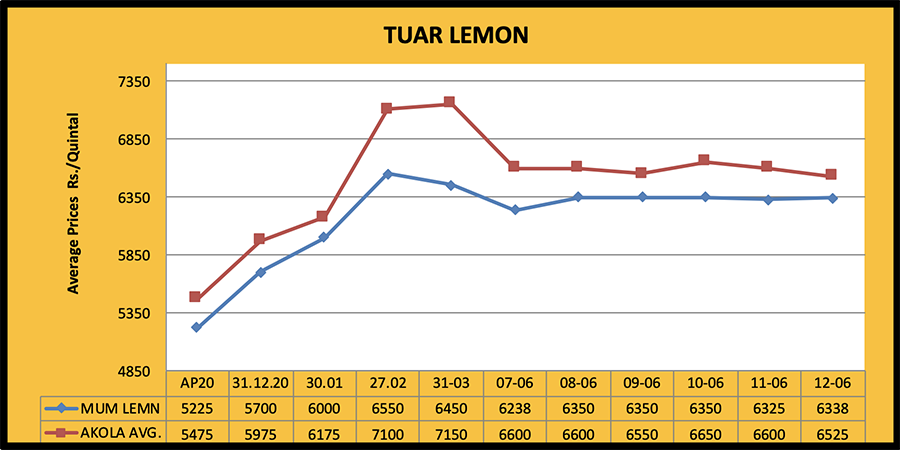
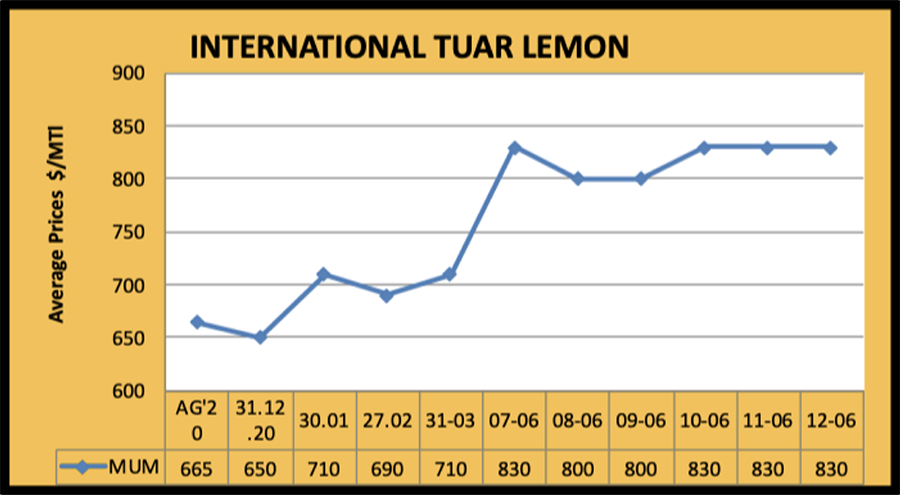
Sowing area of pulses and oilseeds expected to increase this kharif season
The seeded area for soybeans and groundnuts is expected to increase this kharif season. In the case of pulses, there remains doubt as to the seeded area. It is understood that in some areas farmers might increase the area seeded to tuar and urad, but in others the area may decrease. Madhya Pradesh is the largest producer of soybeans and farmers are highly motivated to plant this important oilseed given that its wholesale market price has risen above Rs. 7,000 per quintal, a new record high.
Last year, the soybean crop was affected to a large extent by drought and then heavy rains and flooding, which created fungus problems. On the other hand, in Gujarat there is great enthusiasm and interest among farmers to plant groundnuts. Since China purchased a large quantity of groundnut oil, the market price for groundnuts in the country skyrocketed and farmers reaped healthy profits. Gujarat is a prominent producer of groundnuts as well as cotton and castor, but farmers are likely to shift more towards groundnuts this season. There may be some reduction in the area sown to cotton. Because of unfavourable weather conditions and an outbreak of pink bollworm for the past two years, the cotton crop has suffered much in many areas; farmers, therefore, are unwilling to take on much risk.
Some critics believe that some farmers in the Sangli region of Maharashtra may prefer to plant soybeans instead of turmeric as the price has been very high and attractive. Pulse and oilseed prices have been high in recent months and this is encouraging farmers to increase the seeded area. But prices of other commodities are also rising, including that of cotton, castor and basmati paddy. Farmers are waiting for the announcement of MSPs for kharif crops and also keeping an eye on the monsoon. Depending on the supply and availability of seed, food and insecticides, farmers may also make last minute changes in their planting plans or crop rotations. This season, the Union Agriculture Ministry is taking some necessary steps to encourage the seeding of pulses and oilseeds.
Pulse prices under stress
Following the Central Government’s decision to include tur, urad and moong imports on the Open General License (OGL) list and take them out of the quota system, there was a lull in the domestic pulse market. The government announced the opening of pulse imports on May 15, not even a month ago, but pulse prices have already fallen 6 to 20%.
It will not be a surprise if there is some further softening of prices due to weak demand. According to reviewers, during the past 20 days, the price of moong dal declined by 15-20%, urad and tuar by 10-15% and gram by 6-10%. Dal millers believe that while lockdowns and other restrictions, including curfews, are not fully lifted, pulse demand may remain weak. Because of weak demand, there is less of a chance that prices will increase.
Government data shows the production of pulses at 256 lakh MT, but despite this, the open import of tur, urad and moong is being allowed. This time, the area seeded to pulses in the summer or zaid season increased by 69% over last year to 17.75 lakh hectares. The area seeded to moong jumped from 8.29 lakh hectares to 14.42 lakh hectares, and the urad area increased from 1.95 lakh hectares to 2.94 lakh hectares. The president of the All India Dal Millers Association stated that there was no unexpected increase in pulse prices and therefore there was no need to open the import of the three pulses. Pulse prices have come down significantly. If the market falls below this level, then, along with farmers, pulse millers and traders will also suffer huge losses. It appears that pulse prices will remain almost stable for the next few months, with limited volatility. In some areas, the price of moong, gram and urad has fallen below MSP. This provides an opportunity for government agencies to increase procurement. The procurement of moong in Madhya Pradesh is going to start soon.
But to maintain the availability of pulses during the festive season, the opening of imports is a good step.
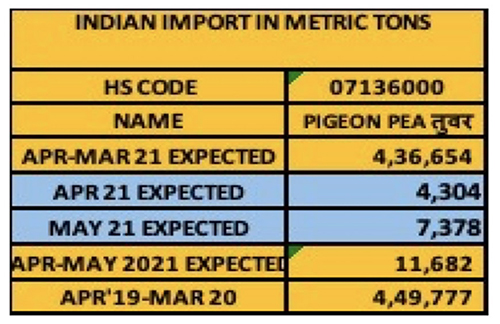
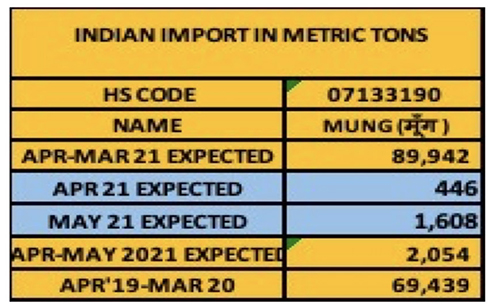
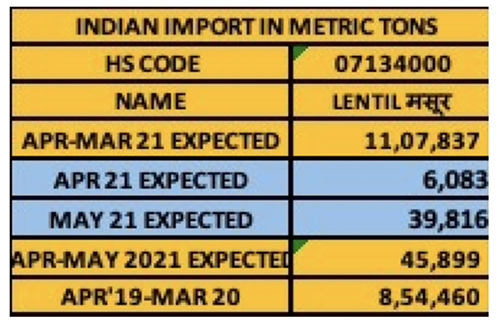
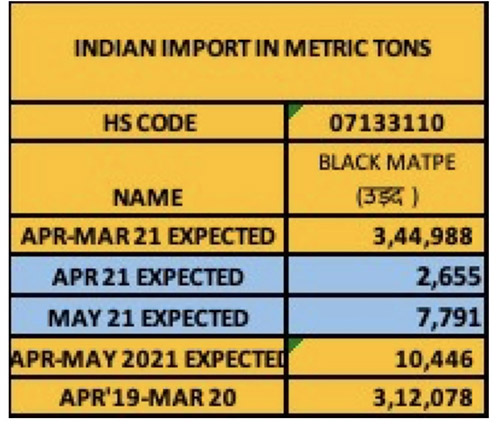
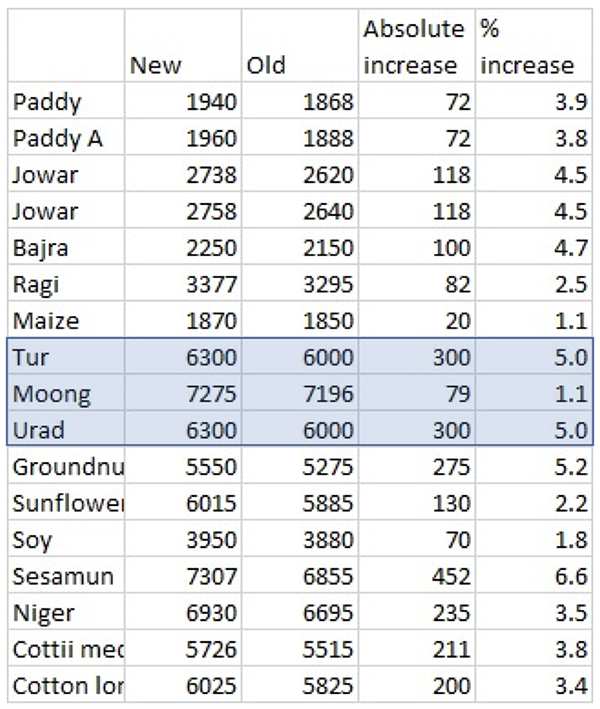
Abbreviations
Tuar/ Arhar: Pigeon Peas PP
Mung: Green Mung
Urad: Black Matpe
Chana: Gram, Desi Chickpea
Matar: Pea
Masur: Lentil
Mandi: Market yard
Bhav: Prices
Dal/Daal: Processed Pulses (Directly for human consumption)
Rs.: Indian Rupees (1$=Rs 73.9)
Rahul Chauhan
Director, IGrain India
igrainind@gmail.com
+91 9350141815
Twitter igrain_india
Disclaimer: The opinions or views expressed in this publication are those of the authors or quoted persons. They do not purport to reflect the opinions or views of the Global Pulse Confederation or its members.